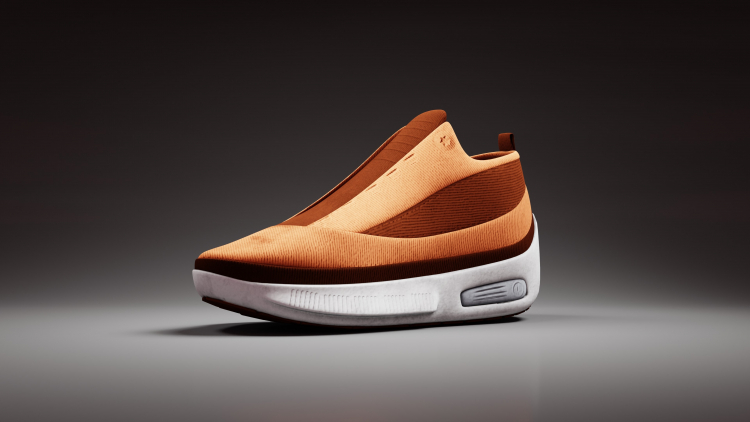Zeros and Ones as the New Fabric

As the environmental state of our planet is demanding for a reduction in clothing production, and with an ongoing pandemic that forced our lives to take place more inside and online than out in the actual world, many major fashion brands have dipped their feet into producing online collections. Balenciaga showed their Fall 2021 collection in a dystopian online game created for this purpose, and offers authentic looks to be worn in Fortnite, Marni showed their Spring/ Summer 2022 collection in their own digital world WearWeAre, Gucci released virtual sneakers for under 20 euros to be worn in the game Roblox, where they also allowed digital access to the Florence based immersive experience Garden Archetypes, Nike has collaborated with digital design studio RTFKT and released sneakers to be worn on the metaverse. The never ending list gets longer every day.
Digital Fashion is the visual representation of programmed items of clothes that don’t exist in physical form, thus allowing it to execute visions that exceed reality’s possibilities. Often sold as NFTs, non-fungible tokens, that make them unique and irreplaceable, and accredit ownership, digital items of fashion are being given to individuals while they don’t receive more than anyone else who has seen their piece online.
While old brands are exploring new waters, many new brands specializing in clothes for our digital identity have sprouted into the industry. “[Digital Fashion] can have a real wow effect because it allows to play with reality, it can go beyond what is possible physically,” says Erik Christian Metz, 19 who worked on a project for the fashion house Auroboros in London, that creates digital fashion that takes inspiration from nature and technology. “This summer I worked for my friend Paula Sello on a project as part of the London Design Festival. We created a digital dress for the artist robot Ai-Da.”
The brand was founded by Sello and her partner Alissa Aulbekova while both were scholars at Alexander McQueen’s Sarabande foundation, and usually create extravagant digital clothing and provide the service of editing the piece on a desired photo of the buyer. As their website claims that one in ten clothing purchases is being made just to dress for social media, they’re offering a zero waste option.
“Big brands are calling digital fashion a great sustainable opportunity for the future, but I disagree. It does not replace physical fashion, but it's a nice extra,” thinks Erik who has since started an apprenticeship as a custom tailor. “It’s a huge contrast because I work completely physically now and learn the craft in a traditional way.” While he missed the satisfaction he would get out of physical creative work, he values the freedom that digital fashion allows for: “Paula is currently working with people spread around her planet, and there are no limits to her work.”
While there are Auroboros filters of accessories and a dress to try out for free, their actual pieces range from £60 for a headpiece to £1,000 for an eccentric full look. Max Schmidt, 24, studies design and couldn't see a similar future for industrial design: “In old times you used to pay for what you get, the material, production and the name. Nowadays, Louis Vouitton makes purses out of plastic and brands that once took pride in manufacturing their items locally, produce in sweatshops far away - the name is what counts. So I can imagine that people will pay for the name even if they don’t get anything real out of it.”
He uses similar software to design prototypes of furniture pieces as used for digital fashion and knows the benefits of digital creation. “You don’t have to find the right material, you can just decide that it exists. It only depends on the limits you give yourself.” However, no such attention would be given to digital versions of his designs: “At the end it’s the product itself that's of value.” While he does not think it will prevail in the near future, he could see himself jumping on the train of digital fashion if our identities shift further online: “If the metaverse became the usual business, I would love to be dressed as good as in reality.”
But as long as data can’t warm us as wool can, the question if digital fashion will be able to hold up in a fabric based industry has to be asked. “I don't think there’s a future in it because there is barely any need for it,” thinks Ellison Baus, 19, an artist with seven years of experience in the fashion world. “The unrealisticness of it all is really fun, and the fantasy ideal world that it allows for is beautiful,” Ellison thinks, "But this whole life we created online can just be taken away in an instant. Some would argue that that makes it even more precious, but I don't agree.”
He also thinks that “digital fashion is almost implying that we’ll be in these digital rooms for the rest of our future, just living on screens, which I don't intend to do.” A designer himself, Ellison thinks fashion should be more than aesthetics and Instagram posts, especially for such high prices. After all one could just screenshot what someone else spent thousands of dollars on.
“It’s a niche of a niche,” observed Erik during his work in London. Too abstract of a concept for many people, and too expensive for the thought of an item for even more, digital fashion will likely never stand in competition with physical fashion, but has already surpassed it in opportunity.







